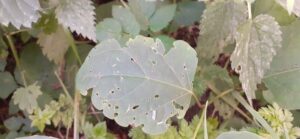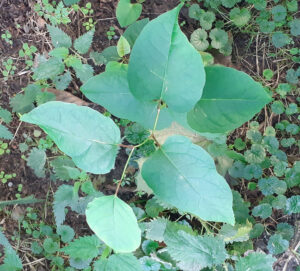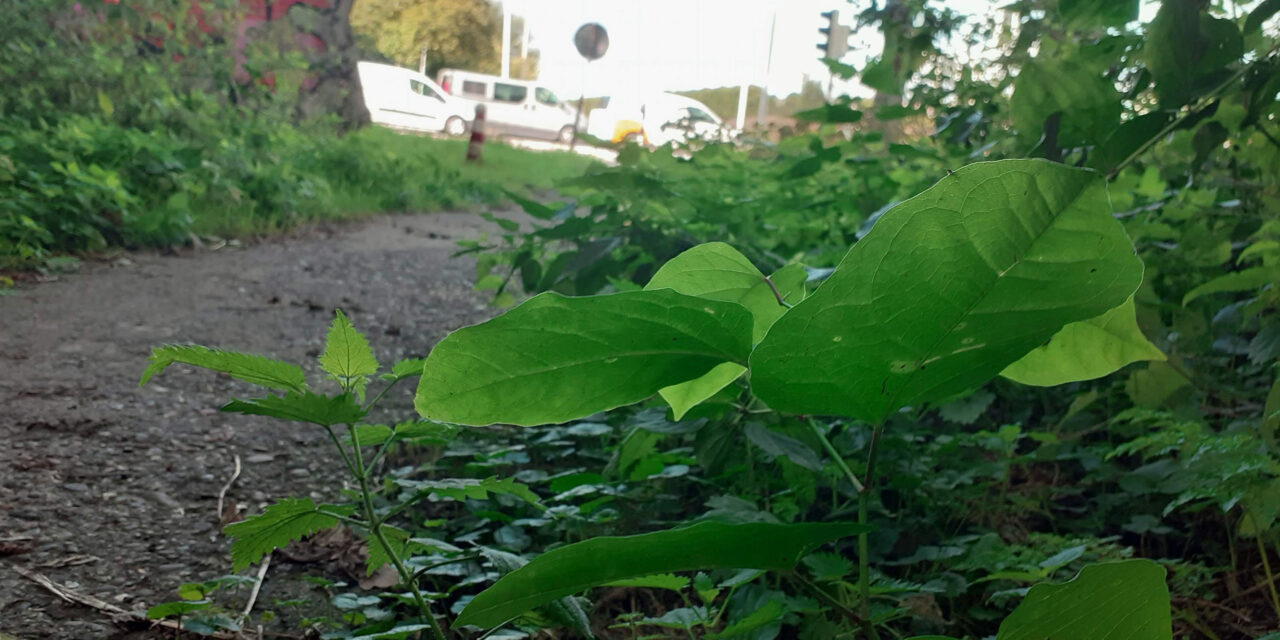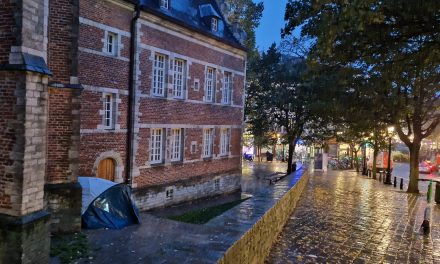Japanese Knotweed is an extremely common invasive plant species which can be identified by its hollow stems and raised nodes. With an underground system of root-like rhizomes, the knotweed proves difficult to eradicate- it causes massive damage to concrete, building infrastructures, and housing estates, as well as biodiverse areas such as wetlands and botanic gardens, where it crowds out other species.

Imported East Asian leaf fleas have found this knotweed plant
The knotweed has become a crisis in Europe where it has no natural predators, unlike in its native habitat of East Asia. It can grow up to several inches per day, and recent studies have revealed that rising temperatures might even accelerate its growth.
There are several methods for tackling Japanese Knotweed but none have proven conclusive. Cutting is one of the most common methods- it involves using a blade to remove the tops of the knotweed, which provides a short term solution to its growth. However, the cutting method is risky as it involves the displacement of knotweed stems.

“All you need is a little bit of root the size of your thumb”
Darren O’Reilly is the director of IMS Ireland, a company which specialises in Japanese Knotweed disposal. He advocates against the cutting method, as ‘what happens sometimes is that a little bit of the root will get pulled up in the cutting action and that gets flung away and it starts to grow again, because all you need is a little bit of root the size of your thumb.’
Instead, the development of ‘knotweed cells’ has become a popular solution. The cells are constructed from a ‘root-proof membrane’, which is a synthetic liner that cannot be pierced by the blade-like leaves of the plant. They are then sealed with ‘a very industrial tape. It’s very strong material, so the knotweed has no chance of getting out’, explained O’Reilly.
The cells are either buried on site at least ten feet underground, or transported to an offsite location for biosecure burial. Although extensive measures are taken to ensure the safe transport of Japanese Knotweed, a risk is always involved with off-site burial- ‘we inspect inside of the truck for any lumps of clay, and we power wash down the back of the truck onto the concrete, because that prevents the spread,’ said O’Reilly.
In the case of IMS Ireland, the burial site is ‘an old quarry,’ according to O’Reilly. ‘It is lined with locally sourced boulder clay and we can take in contaminated soils and stone or construction waste’.
Although this method proves useful for containing outbreaks, it is more a preventative measure than a long term solution. As the knotweed cells are stored in a quarry, they accumulate a large mass over time. Because of this, it is hard to tell what the future of the Japanese Knotweed outbreak is, particularly in Europe.

Japanese Knotweed can be identified by its zigzagged, burgundy stems and flat-topped leaves
The most important part in dealing with Japanese Knotweed is ensuring that people are aware of it. When they are aware of it, they can contact their local council for an appraisal with an ecologist. The danger is when the plant remains unnoticed until its roots have deeply buried themselves, which makes the rhizomes difficult to remove.
‘I think the local county councils have upped their game in relation to it… a lot of people know about it, especially when they go to sell their house,’ O’Reilly laughed. ‘There are more and more cases that we’re seeing for disposal and we don’t know if it’s a matter of if they just don’t have the ability to bury it on site, or that it might just be growing more rapidly… we do see a lot more cases.’




